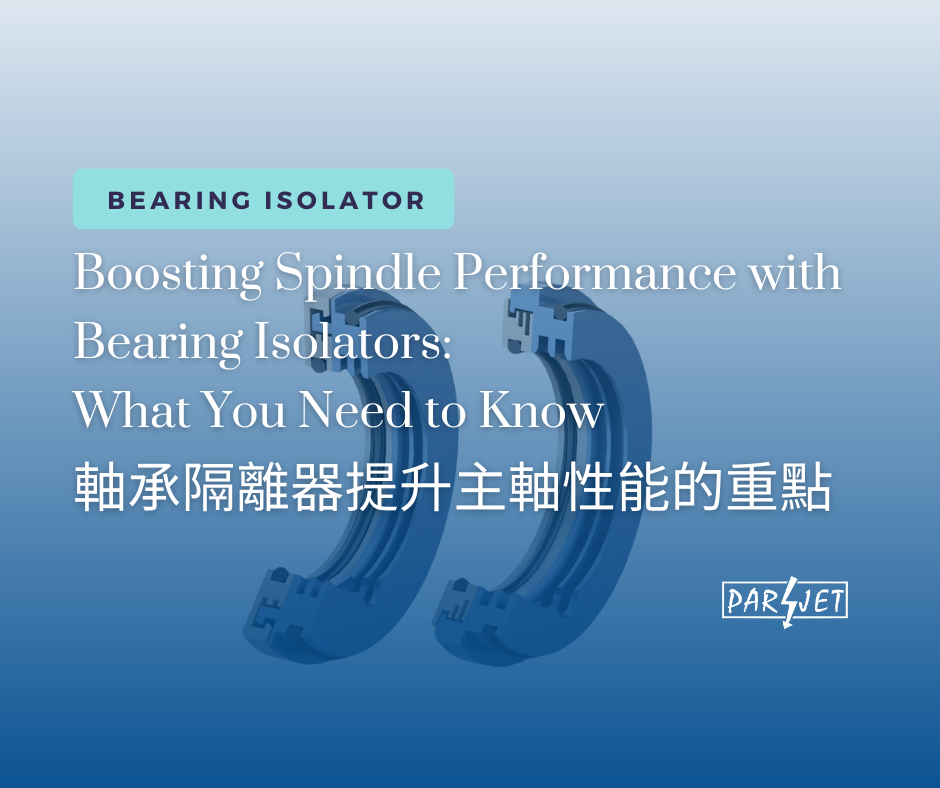Boosting Spindle Performance with Bearing Isolators: What You Need to Know
In high-speed spindle applications—whether in CNC machining centers, woodworking routers, or textile equipment—precision and reliability directly influence the operation. And at the heart of it all lies the spindle, a core component that must operate efficiently to ensure optimal machine performance. Many manufacturers use traditional rubber oil seals in their systems however, the majority of the rubber oil seals are unable to withstand such high speeds and therefore, result in sealing failures. An alternative substitute that are often overlooked but critical way to protect and enhance spindle life is by using a bearing isolator.
What Is a Bearing Isolator?
A bearing isolator is a non-contact, labyrinth-style sealing device that protects bearings from contamination while keeping lubrication in. Unlike traditional contact seals, which wear over time and allow leakage, bearing isolators are designed to provide long-lasting protection without friction or degradation. Since they are non-contact sealing devices, they also do not have heat-generated issues and extend the life expectancy for various machines.
Why Use Bearing Isolators on Spindles?
Spindles operate at high speeds and are exposed to harsh environments—dust, coolant, chips, and other contaminants are constant threats. Here's how bearing isolators add value:
1. Contamination Control
Bearing isolators block airborne particles, coolant splash, and moisture from entering the spindle housing. Keeping contaminants out helps prevent premature bearing failure—a leading cause of spindle downtime.
2. Lubrication Retention
With high-speed spindles, lubrication loss can lead to overheating, vibration, and reduced accuracy. Bearing isolators keep grease or oil where it belongs, maintaining a consistent lubrication environment.
3. Extended Equipment Life
By reducing wear and maintaining cleanliness, bearing isolators extend the life of both the bearings and the spindle itself. That means fewer replacements, less maintenance, and reduced operational costs.
4. Energy Efficiency
Because they operate without contact, bearing isolators do not generate heat or resistance. That translates to lower energy consumption and improved spindle efficiency—especially important in high-duty cycle operations.
5. Maintenance-Free Performance
Once installed, most bearing isolators require zero maintenance. This makes them ideal for applications where equipment uptime is paramount and manual access is limited.
Real-World Applications
Manufacturers across industries are already seeing the benefits:
- • CNC machining centers reduce unplanned spindle rebuilds.
- • Woodworking spindles stay protected from sawdust and fine particles.
- • Textile machinery maintains high RPMs with reduced downtime.
Key Considerations for Implementation
- • Size and compatibility: Ensure the isolator fits your spindle housing and bearing dimensions.
- • Material selection: Choose corrosion-resistant materials for wet or chemically exposed environments.
- • Speed rating: Verify that the isolator is rated for the operating speeds of your spindle.
Conclusion
The upfront investment in bearing isolators can deliver significant long-term savings and performance gains. Whether you're looking to increase machine reliability, lower maintenance costs, or improve spindle performance, this simple addition can make a big impact.
If you haven’t yet evaluated bearing isolators for your spindle systems, now might be the time.
At Parjet
We offer customized PTFE bearing isolator - ParSave® tailored to each application. PTFE has excellent characteristics and widely recognized for its excellent chemical resistance, low friction, and non-stick properties. When used in bearing isolators, PTFE adds a new level of durability and performance—especially in applications with extreme temperatures, aggressive chemicals, or high-speed rotation.
Contact us here for more information on PTFE Bearing Isolator.






